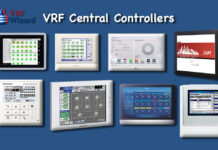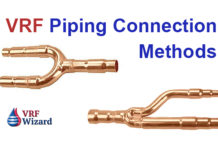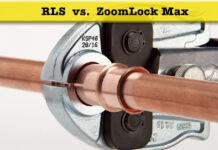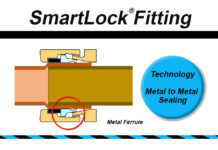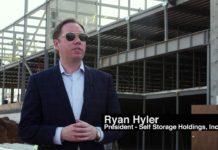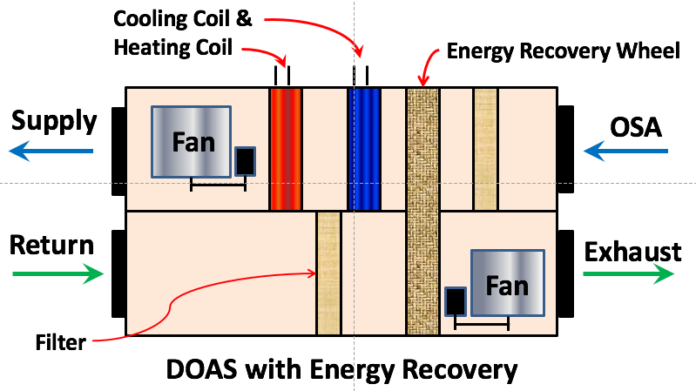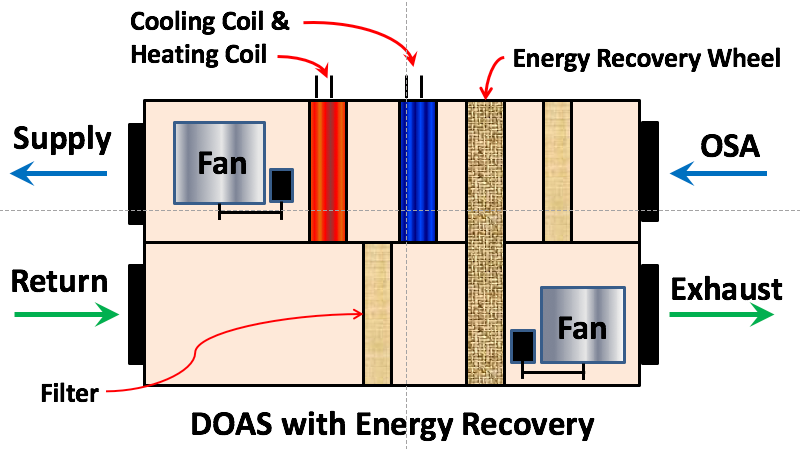DOAS – Energy Recovery
When is an Energy Recovery system required according to ASHRAE 90.1 (2013)?
ASHRAE 90.1 2013
(Energy Standards for Buildings, Except Low Rise Residential Buildings)
When using a VRF Dedicated Outside Air System (DOAS) to bring in ventilation air to satisfy ASHRAE 62.1, you need to consider Energy Recovery. ASHRAE 90.1 defines the requirement to install an energy recovery system based on climate zones and the total percentage of outside air in relationship to the total Supply CFM.
The higher is the percentage of outside air to supply air, the greater the requirement for energy recovery.
According to ASHRAE 90.1 “Each fan system shall have an energy recovery system when the system’s supply airflow rate exceeds the value listed in Tables 6.5.6.1, based on the climate zone and percentage of outdoor airflow rate at design conditions.”
There are ten (10) exceptions to this standard so be sure to look them over if implementing this strategy would be difficult for your project.
DOAS Energy Recovery Wheel
The energy recovery wheel transfers energy from the air stream leaving the building to the air stream entering the building in heating season. As the return air enters the energy recovery wheel it comes in contact with the surface area of the moving wheel.
This portion of the wheel absorbs the higher energy and then releases it on the other side to the lower energy outside air entering the building for ventilation.
The energy transfer is the opposite for the cooling season, where the heat entering the building for ventilation gives up its higher energy to the cooler, lower energy return air being exhausted, thus cooling the outside air.
Sensible vs Latent Heat Transfer
One aspect of the heat transfer will affect the temperature of the air entering or leaving the building. This involves the sensible heat, which is measured by the dry bulb temperature in Fahrenheit or Celsius.
The standard wheel accomplishes the sensible heat transfer, but for latent heat transfer you need a desiccant wheel. The desiccant will absorb the moisture from one air stream, the higher vapor pressure air stream and release it to the lower vapor pressure air stream.
Its basic physics which we don’t have to fully understand to appreciate the beauty of, or how it can save energy and money for your customer.
Energy Recovery System Effectiveness
Per ASHRAE 90.1 “Energy recovery systems required by this section shall have at least 50% energy recovery effectiveness. Fifty percent energy recovery effectiveness shall mean a change in the enthalpy of the outdoor air supply equal to 50% of the difference between the outdoor air and the return air enthalpies at design conditions.”
On your next VRF project where you are contemplating using a Dedicated Outside Air System (DOAS), checkout energy recovery as an option.
Please leave us a comment on projects or your thoughts on the use of energy recovery in VRF projects.
Be sure to checkout our time and money saving spreadsheets;
- VRF System Installation Cost Estimating Spreadsheet
- VRF System Installation Budgeting and Historical Cost Database Spreadsheet


